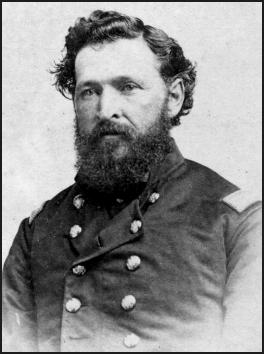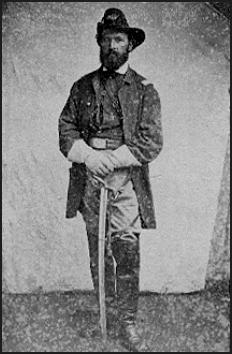Edward Payson Chapin facts for kids
Quick facts for kids
Edward Payson Chapin
|
|
|---|---|

Col. Edward Payson Chapin
|
|
| Born | August 16, 1831 Waterloo, New York |
| Died | May 27, 1863 (aged 31) Port Hudson, Louisiana |
| Place of burial |
Maple Grove Cemetery, Waterloo, New York
|
| Allegiance | United States of America Union |
| Service/ |
United States Army Union Army |
| Years of service | 1861–1863 |
| Rank | |
| Unit | 44th New York Infantry Regiment |
| Commands held | 116th New York Infantry Regiment |
| Battles/wars | American Civil War |
Edward Payson Chapin (born August 16, 1831 – died May 27, 1863) was an American lawyer and soldier. He fought for the Union Army during the American Civil War. Chapin was wounded twice, both times on May 27. He was killed in battle in Louisiana. After his death, he was given a special promotion to brigadier general.
Contents
Who Was Edward P. Chapin?
Edward P. Chapin was born in 1831 in Waterloo, a small village in Seneca County, New York. He was the youngest of six children. His father, Ephraim Chapin, was a Presbyterian minister. His mother was Elizabeth White Maltby.
Chapin's Early Life and Education
Chapin first went to school in Waterloo. Later, he studied law in Buffalo and Ballston Spa. In 1852, he became a lawyer in New York. He worked as a lawyer in Buffalo. Chapin also played baseball for the Niagaras, Buffalo's first semi-pro team. He was also a captain in New York's state militia.
Chapin's Role in the Civil War
When the American Civil War started in 1861, Edward Chapin joined the Union side. On September 6, he became a captain in the 44th New York Infantry Regiment. This regiment left New York on October 21 with 1,061 soldiers. They joined the Army of the Potomac.
Chapin's First Wounding and Promotion
On January 2, 1862, Chapin was promoted to major. He fought in the Peninsula Campaign in Virginia. On May 27, he was badly wounded during the Battle of Hanover Court House. His commanding officer, Brig. Gen. John H. Martindale, praised Chapin for his actions in this battle.
On July 4, 1862, Chapin was promoted again to lieutenant colonel in the 44th New York. However, he left the army that day to recover from his injury. While he was getting better, officials from Buffalo asked him to form and lead a new regiment. This new group was called the 116th New York Volunteer Infantry.
Leading the 116th New York Infantry
On September 5, Chapin became the commander of the 116th, with the rank of colonel. He led his regiment south to Baltimore, Maryland. They stayed there until November when they were sent to Mississippi.
Chapin and the 116th arrived at Ship Island, Mississippi, by ship on December 14, 1862. By the end of that year, they reached New Orleans, Louisiana. On February 9, 1863, Chapin was given command of a brigade (a large group of soldiers). This brigade was part of Maj. Gen. Nathaniel P. Banks's army. They were fighting against Confederate forces who were defending the Mississippi River.
Chapin's Final Battle and Death
Chapin and his command fought in the Battle of Plains Store on May 21. Again, his leaders praised him for his bravery. Six days later, Chapin led his brigade against the Confederate forts around Port Hudson, Louisiana. These were the first attacks in the Siege of Port Hudson.
Chapin was wounded for the second time in the Civil War during this battle. This injury led to his death. His body was sent back to Waterloo, New York. He was buried in Maple Grove Cemetery in Waterloo.
Four months after he died, President Abraham Lincoln sent Chapin's father a special document. It officially made Chapin a brigadier general. This was "for gallant and meritorious service" (meaning brave and excellent service) at the attack on Port Hudson. The document was dated the same day Chapin died. Chapin Parkway in Buffalo, New York, was named in his honor.
See also
- List of American Civil War generals (Union)


